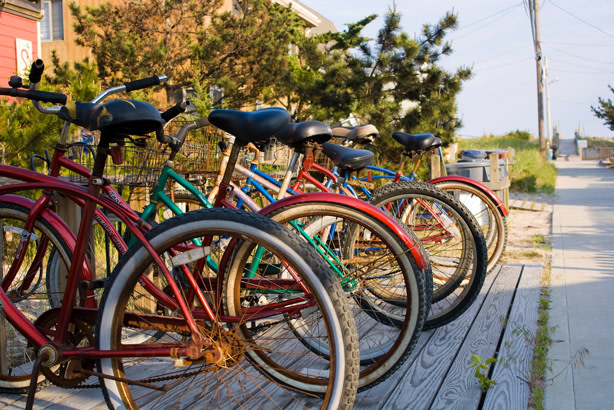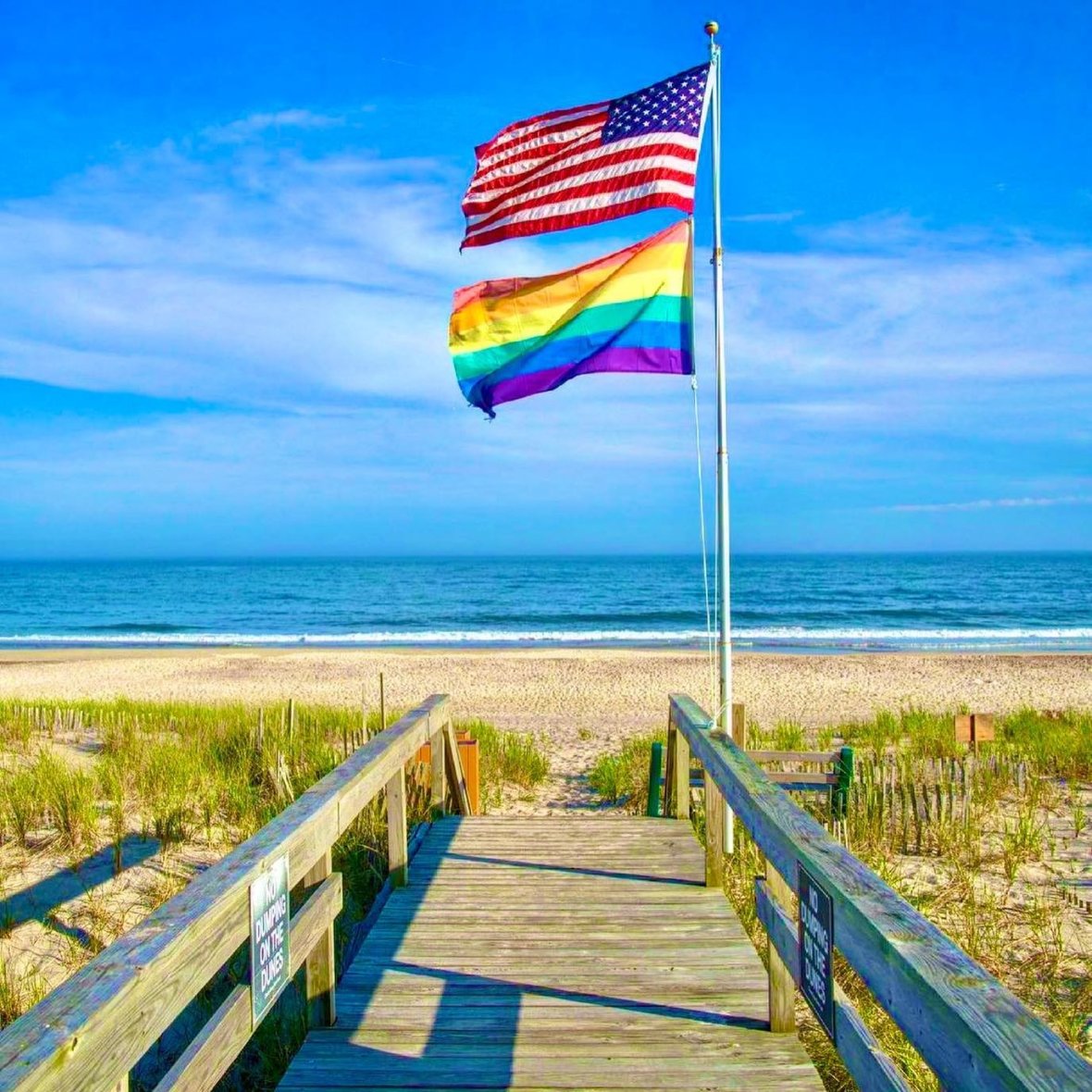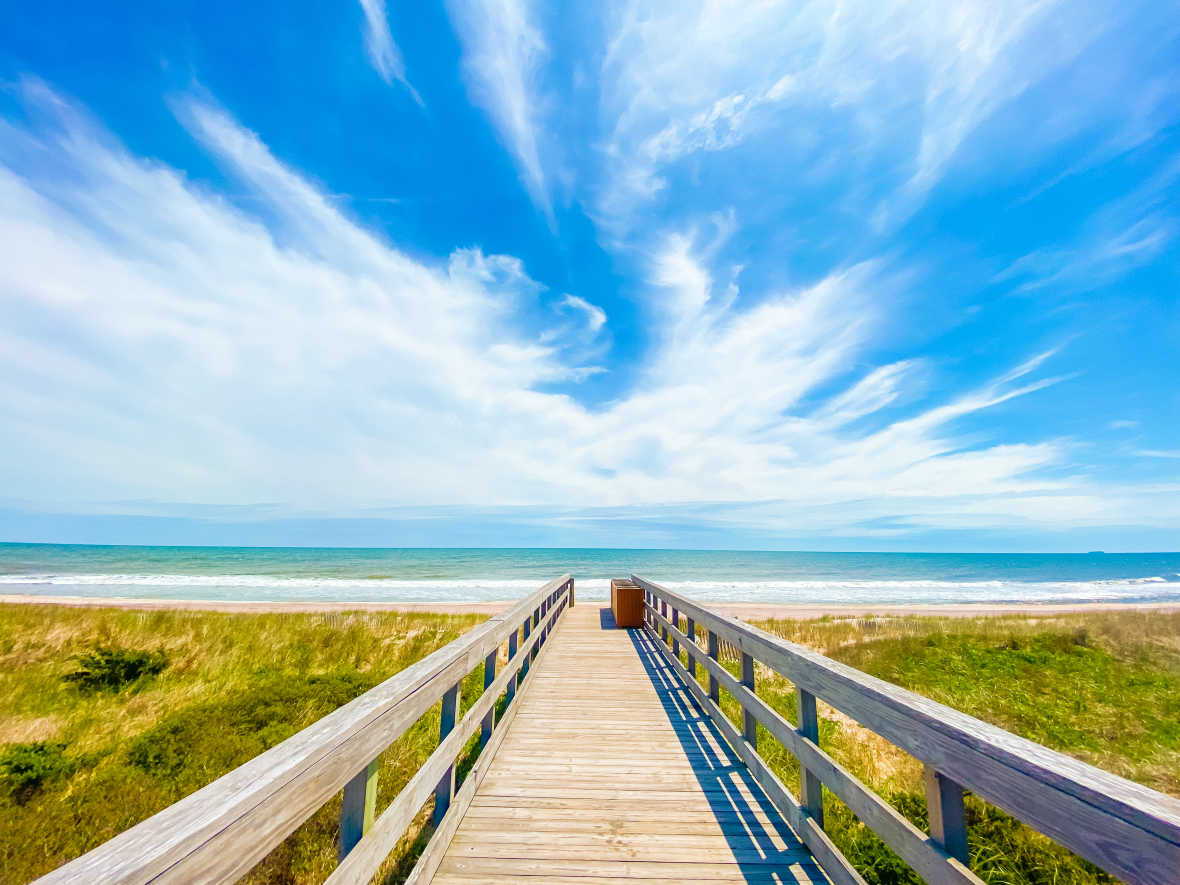A dreamy whisp of a barrier island underscoring the southern edge of Long Island, Fire Island and its 32 miles of sandy white beaches is the ultimate summer fantasy for New Yorkers sick of the heat and packed city streets. Now, it’s easier than ever to get to, thanks to MTA packages combining LIRR train tickets and ferry service, smoothly linking New York City with some of Fire Island’s best resort communities.
LIRR
Montauk
Access Fire Island from Sayville, Bay Shore or Patchogue by ferry with our Fire Island Beaches Deals
People have been coming to Fire Island as a relaxing escape from the city for centuries (Oscar Wilde even stayed there on his tour of America in 1882). Thanks to famed destinations like Fire Island Pines and Cherry Grove, the island got its reputation for raging summer parties filled with drag and disco balls in the 1970s and ’80s. Today, there are plenty of car-free and carefree resort communities where you can experience its quieter side, including Sailor’s Haven, Fair Harbor, and Ocean Beach.
If you’re looking to relax, take a breezy bike ride or beach walk, eat some seafood, and enjoy the calm far from the storm of city life, here’s a guide to the historic, eco-friendly, and tasty sides of Fire Island.
Eco-friendly Fire Island
Sailors Haven and Watch Hill

One of Fire Island’s most distinctive natural features, the Sunken Forest in Sailor’s Haven is a favorite among professional photographers and Instagram enthusiasts alike. A rare collection of trees that took root from seeds drifting on the air, the Sunken Forest edges up against the sand dunes beyond, with holly, sassafras, juneberry, oak, and black cherry, some of which are thought to be 300 years old. You can explore on your own, perhaps with a copy of the National Parks Service’s Sunken Forest Trail Guide in hand, or sign up for one of the ranger-led public tours that leave from Sailors Haven Visitor Center.
The Otis Pike Wilderness near the eastern community of Watch Hill takes you even farther away from any sign of urban living. No restaurants, bars, or clubs here; what you’ve got instead is seven miles of salt marsh, dotted with campgrounds and fishing spots, accessible only by foot or boat. The only federally designated wilderness area in New York State, Otis Pike is also one of the nation’s smallest, but it offers plenty of opportunities for birdwatching (waterfowl are abundant), nature walks, and angling for bluefish and striped bass.
Then, of course, there’s the beach itself, which most people tend to overlook just because it’s always right there, as Anderson explains. “But if you know what to look for, it’s absolutely amazing,” he says, “with everything from tiny sand crabs to a wide variety of birds.”
Tasty Fire Island
Fair Harbor, Davis Park, Ocean Beach, and Ocean Bay Park

Tucked in among Fire Island’s windswept sand dunes are plenty of excellent places to get a bite to eat. Many were first established in the heady midcentury party days, and are now blossoming under a new generation of ownership eager to carry on the island vibe.
Le Dock, in Fair Harbor, has been around since 1976, but now it’s updated its classic seafaring menu to include global items that are sure to please a younger generation. That means you can order Korean fried chicken or Baja fish tacos along with your classic Caesar salad. A wraparound patio ensures terrific views of the sunset over the beach, while a menu of craft cocktails ensures you’ll have a great time long into the night.
There’s no gambling on the premises, but the Casino Café over in Davis Park does afford some of the glamor of a night out on the town. Around since 1945 (it opened the same day the Allies reached the beaches of Normandy in WWII, the website likes to point out), it has been passed down through several generations to become a central island meeting spot, complete with a bar and grill, a huge deck overlooking white sand dunes, and frequent live music and dancing.
Island Mermaid in Ocean Beach is a casually elegant restaurant and playful event space, serving up classic seafood, burgers, and lobster rolls with a side of live music, DJ sets, bingo, and burlesque. It’s been around in its current form for 25 years, now owned by a long-time island enthusiast who started working at local restaurants in 1976.
In Ocean Bay Park, Flynn’s has been open in one iteration or another since the 1930s, offering sophisticated lobster meals overlooking a 50-slip boat marina. Like other locations on the island, it is not accessible by car, but you can walk there from other Fire Island locations like Ocean Beach, or directly by ferry.
Historic Fire Island
Fire Island Pines, Cherry Grove, and Kismet

With its LGBTQ-friendly nightlife and upscale homes, these parts of the island, which locals refer to as simply “The Pines” and “The Grove,” are largely responsible for its reputation for debauchery. Sure, you can get yourself invited to a pool party or two, but there’s plenty to do here even if you don’t know any locals.

The Fire Island Pines Historical Preservation Society, helmed by Bobby Bonanno, collects photos and documents to tell the story of the Pines from the 1940s onward, all of which you can browse on its website in advance of your visit. But you can also join one of the Society’s walking tours, which are a great way to experience Fire Island history through its most striking homes. “Every house has a story,” explains Bonanno, “but there are also unique parts of the houses” that have lent them particularly quirky nicknames over the years. The Pyramid House has an entire glass back overlooking the dunes with a distinctly angular shape, while the TV House “actually looks like an old-fashioned TV.” Some houses, like the Calvin Klein House, are simply named after the celebrities who once owned them.
If you’re looking to go even further back in time, a visit to the Fire Island Lighthouse near Kismet is in order. First built in 1826 and later rebuilt, the lighthouse served as a beacon for trading ships and new immigrants making the transatlantic crossing. After it was decommissioned in 1974, locals banded together to raise funds to keep it standing, eventually creating the Fire Island Lighthouse Preservation Society. It also marks a particular geographical oddity: “The island is actually shifting as storms - especially wintertime nor’easters - move the sand ever more westward,” explains long-term resident and keeper of Fire Island lure Bob Anderson. “So where the lighthouse stood when it was built was right at the end of the island, but the island now runs five miles farther.”
MTA Away Bonus! Our friends at Discover Long Island visited Cherry Grove via the Sayville Ferry:
Final thoughts on Fire Island
Each of these places gives visitors just a taste of what the island has meant for so many generations: a getaway, just far enough from the rest of the world to feel safe, welcoming, and like home. “You get on a boat and the world drifts away,” says Bonanno, “and that’s the unique and wonderful thing about Fire Island. We have no cars - it’s travel by walking - and it brings you back to some simplicity, which, in these times, is so very needed.”
Don't miss our other guides to help you find your perfect beach vibe:
Car-Free Beach Guide: Long Island Edition
Car-Free Beach Guide: New York City Edition



